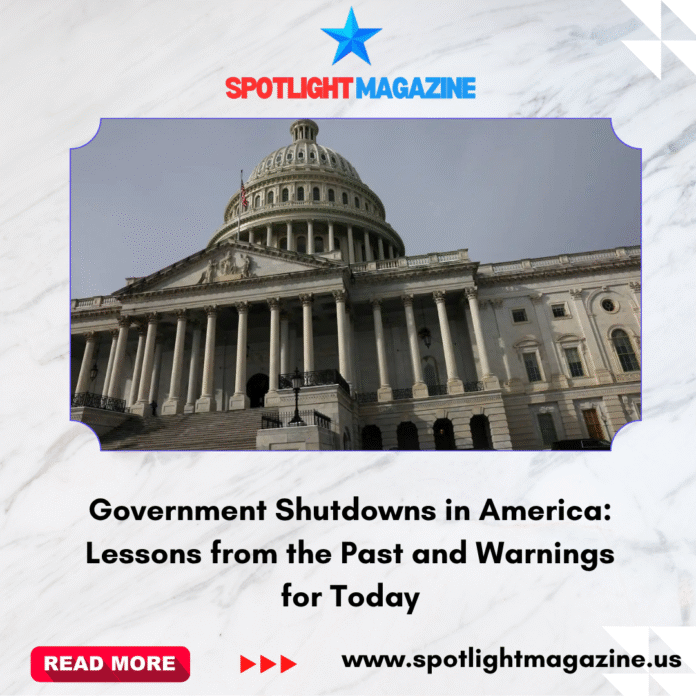By Mahad Hussein Ahmed —Co Founder and Publisher of Spotlight Magazine
A government shutdown occurs when Congress fails to approve the funding required to keep federal agencies operating. While essential services such as the military, Social Security, and air traffic control continue, many other vital operations are forced to pause or function without pay. Shutdowns may appear to be political disputes in Washington, but behind every delay or negotiation are real consequences that impact ordinary American families.
The 2018–2019 Shutdown Under President Trump — A Historic Standoff
The longest shutdown in United States history took place under President Donald Trump, lasting 35 days from December 22, 2018, to January 25, 2019. The standoff began over $5.7 billion in proposed funding for a wall along the U.S.–Mexico border. President Trump insisted on the funding, while Democrats refused to approve it, offering money only for general border security without a permanent wall.
With neither side willing to compromise, the government ran out of funding and partially closed.
The impact was immediate:
- Over 800,000 federal employees were either furloughed or forced to work without pay.
- TSA agents, air traffic controllers, and FBI personnel continued working but received no
paychecks during the shutdown:
- National parks were left unstaffed, leading to sanitation issues and safety risks.
- Airports experienced flight delays and staff shortages.
- Many government workers were forced to borrow money, seek food assistance, or delay rent payments.
In the end, the shutdown concluded without Congress approving the wall funding directly. President Trump later declared a national emergency to redirect money from other sources, but the 35-day shutdown exposed the deep cost of political deadlock.
The Current Shutdown Crisis — Different Leaders, Same Pattern
Today, the United States once again faces the threat of a government shutdown — not over a single issue, but over broad disagreements within Congress regarding federal spending priorities. Current disputes focus largely on:
- Immigration and border policies
- Foreign aid, particularly for Ukraine
- Internal divisions within Congress — even among members of the same political party
Rather than passing a full-year budget, lawmakers have repeatedly relied on short-term extensions. This has created instability, leaving federal workers and agencies uncertain about future operations. If these temporary measures expire without agreement, the government could enter yet another shutdown.
Shutdowns Do Not Punish Politicians — They Punish Citizens
Every shutdown, past or present, delivers the same lesson: while political leaders argue, everyday Americans suffer.
- Workers go unpaid.
- Small businesses relying on government services lose income.
- Public safety and transportation are strained.
- Essential programs face delays or disruption.
Shutdowns may begin with policy disagreements, but they end with national consequences.
Final Reflection
As a political science student and the publisher of Spotlight Magazine, I believe civic awareness is one of the strongest tools our communities can have. Government shutdowns are not just political news stories — they are reminders of what happens when leadership fails to prioritize cooperation over conflict. Democracy must continue working, even when the government does not.
Our message to lawmakers should be clear: Resolve your differences — but not at the expense of the people you represent.


